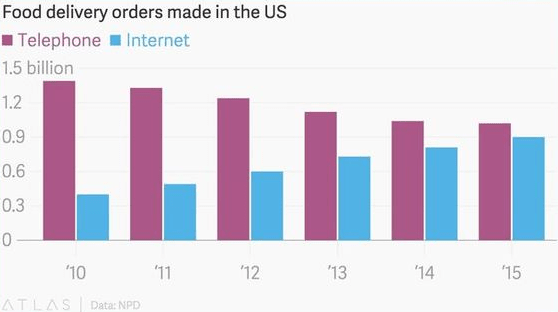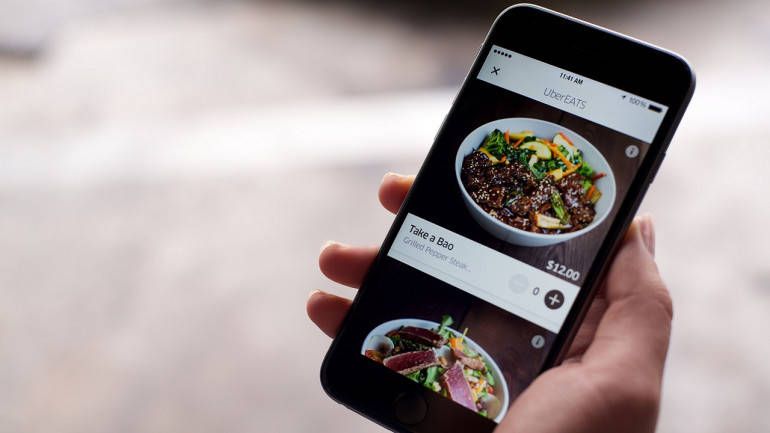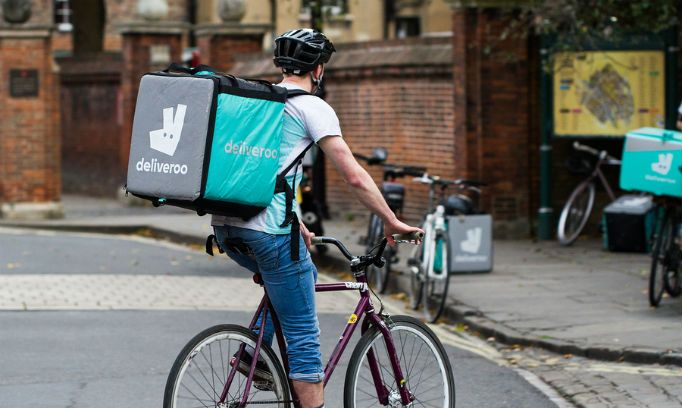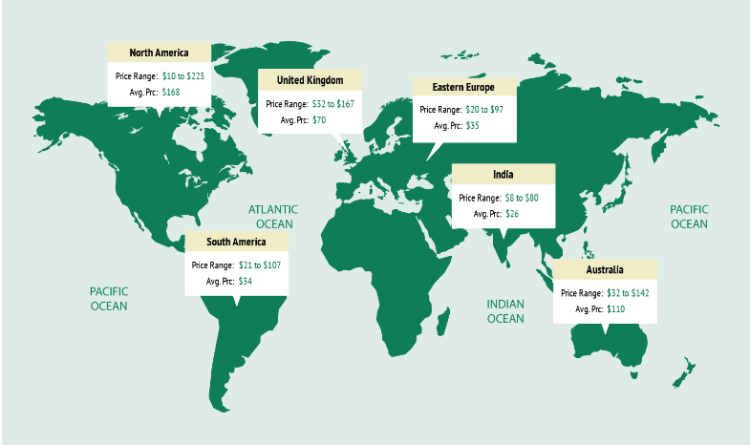Food ordering mobile apps have revalorized our work in many ways in recent years. I can say, these types of smartphone applications have turned into a flourishing market for global clients and become the necessity for the citizens of large municipalities. Nowadays food ordering smartphone applications have grown the business conductors from anonymous assistance and it simply took few years to reach this milestone. We can say, the food ordering market is going to boom more in coming days.
The food delivery market is booming and mobile technologies are shaping it in new ways, making ordering fast for customers and delivering the best service easy for businesses. In this article, you’ll find out how to build a mobile food ordering app. We’ll tell you all about the development process and the cost.
Market Overview
Food delivery is one of the fastest growing trends in the food industry. Nowadays, more and more people are likely to order food than to cook it. According to research by the NPD Group: while the food delivery visits grew by 10% in 2016, restaurants total visits have shown only a 1% rise.

Ordering a delivery is becoming popular faster than eating out, and if you think that people spend more money in restaurants than on take-away, you’re only barely right: the average bill in a restaurant is only £1 higher in the UK.
The food industry is also changing in terms of interactions with customers. Many people, especially among younger generations, don’t like to make phone calls. It’s much easier to text or just tap on a smartphone.

Food delivery services are taking this into account and developing mobile apps. In these apps, customers can browse restaurants and menus, place orders, and pay without having to say a word. This makes mobile app food ordering even more popular.
“One of the most significant disruptions in the restaurant business today is the rapid increase in delivery.”
In the past few years, many food chains and delivery services rushed to make food delivery available. For example, Uber created UberEats, which became even more profitable than the ride-sharing service. McDonald’s paired with UberEats in 2017, making food delivery possible. McDonald’s says that “One of the most significant disruptions in the restaurant business today is the rapid increase in delivery.”
Why is a mobile app so necessary for food businesses?
Of course, orders can be placed on a website. But when Domino’s – one of the pizza delivery giants – launched an app, they discovered that 55% of total sales were made through online orders and over 60% of those were made through mobile devices.
With a mobile app, you can get ahead of your competitors by enhancing the user experience and removing the need to use a computer or make a call. This can help you attract a new audience of people who love to do everything with the help of their mobile devices.
A mobile app can also help your employees by giving them directions, setting delivery times, changing orders, and opening a whole range of possibilities to sync all steps of the delivery process.
Types of delivery services
There are three business models that all delivery services can be divided into:
- Aggregators
- New delivery
- Full-service on-demand delivery
Let’s talk about them in detail.
- Aggregators appeared first, and what they did is collected all the information about restaurants and allowed users to look through menus and make orders. Aggregators still exist, but there are usually only a few major players in any given market. Their main function is to get orders from customers and then give them to restaurants. The restaurant, in this case, handles everything else, including food preparation and delivery. This is actually the biggest difference between the aggregator business model and the new delivery model.
- New delivery also allows users to choose a restaurant and select from the menu, but new delivery services handle the delivery themselves. New delivery services have their own logistics systems, own delivery drivers, and own vehicles. Though this business model requires more money, it allows for greater revenues too. The reason is that such a service can offer delivery from any restaurant. This provides a wider choice, including among luxury restaurants that don’t usually offer delivery.
- Full-service on-demand delivery doesn’t count on restaurants at all: it provides the full cycle of food preparation and delivery. Such companies have their own chefs and logistics, which allows them to get more profit. While the previous two business models get money only for delivery and small fees from restaurants, full-service businesses get revenue both from delivery and from the food itself.
This model also provides the most control. If something goes wrong on the restaurant’s side, a new delivery service has no control over the situation, but customers usually blame the delivery service all the same. If a business controls every step rather than working as an intermediary, there’s a greater chance to avoid unpleasant situations or fix them as soon as possible.
However, the main downside of this model is the massive startup capital required, as this business model requires salaries for many employees, costly equipment for cooking food, and a logistics system including vehicles and delivery drivers.
One of the things that all of these services have in common is the need for a mobile app. Now we’ll talk about how to create a food ordering app and make it successful. We’ll talk about both new delivery and full-service on-demand delivery apps. These are the most promising business models for food delivery in our opinion.
How to make a food ordering app
In order to make a food ordering app for restaurants great, it has to cover all the steps of food delivery, and it happens that these steps involve different groups of people: customers, delivery drivers, and restaurants. A mobile app for restaurant ordering can help them interact seamlessly. This makes the delivery process much faster and gives you more control.
The best way to go about creating a food ordering app is to make three versions of it:
- Customer version – contains menus and easy ways to choose dishes and pay for them
- Courier version – includes information about orders, locations, and delivery routes
- Restaurant version – provides access to the order list and allows employees to contact couriers to organize delivery
There are two ways to design an app for food delivery:
- Make three standalone synchronized apps
- Make three interfaces for the same app
In our opinion, it’s better to make three standalone applications. First, they’ll be much easier to develop, as the restaurant mobile app developers won’t have to think about making all three mobile clients work together. Second, there will likely be fewer bugs.
So we’ll need three apps. Let’s talk about them in more detail.
Customer app
While all the features we’ll talk about in a minute have to work perfectly, the user interface is probably the most important part of the application for customers. Your application has to look nice, and according to the latest trends, we advise arranging visual elements in such a way that they present each restaurant and each dish with a beautiful photo.

The customer version of the app has to sell, so think about marketing as well: include bonus and loyalty programs and allow for discounts.
Remember that in 90% of cases, customers delete a recently installed app within a few days. For this reason, you need to do everything to keep new customers in your app and enjoying it.
Now let’s talk about all the features that an app for customers can’t exist without.
- Personal Profiles
Signing up is the first thing your customers will need to do before placing an order. A personal profile should include basic information about the customer, but the most important points are their name and city. Don’t request excess information from your users: ask only for what you’ll need to deliver food.It’s a good practice to give customers the ability to sign up and log in with social media accounts, for example, Facebook. This will allow them to skip filling in the sign-up form.A user profile has to include information about the most frequently used addresses for delivery (for example, home and work addresses) and payment information.Information about favorite restaurants and recent orders can help customers to make instant orders or repeat orders in one click.
Personal profiles also need to support discounts, coupons, and anything else that makes up your marketing strategy.
- Search and Menus
This is the main feature of a food delivery app for customers and should be implemented very conveniently. You should include search with advanced prediction functionality to recognize search requests before they’re even fully written.Think thoroughly about categories for search: you’ll need to let users search by restaurants, dishes, and delivery time. Also, the search should rely heavily on geolocation and find restaurants near the user.Menus should include pictures of dishes and also prices. Don’t make your customers search for information for too long: the most important information has to be displayed right away. And don’t forget about visual elements. Maybe your app doesn’t need complex animations, but the menus should look nice and be minimalist. - Delivery Time and Real-time Tracking
It’s great when a user knows exactly when to expect the courier with a box of tasty food. This feature can be implemented with the help of machine learning, which can estimate delivery times based on large amounts of data including distance, average time for food preparation, and size of the order.
You can also include an ability to watch delivery progress in real time so that your customers can track courier movements and see when their food will arrive. - Payments
Easy checkout is one of the key stages in the ordering process. Remember that the easier the checkout is, the more sales you’ll make. Make sure to implement a payment gateway that includes as many payment options as possible.Your payment gateway should be secure and reliable.We recommend integrating Stripe or Braintree, however, PayPal is also a good option. All of them have a broad range of payment options and are popular in many countries. Their fees are also quite similar,
however, there are some differences. Pick the gateway that suits you and your customers best. - Ratings and Reviews
In order to make your service truly competitive, you should get feedback from your customers and make improvements according to it. Users need to know that their comments matter.If you choose the new delivery business model in which you don’t have control over restaurants, you’ll need to establish communication between users and restaurants. - Push Notifications
Push notifications are a great way to get in touch with customers and inform them about delivery status, new offerings, discounts, and more. You can use push notifications both for informational and marketing purposes. They allow you to remind customers of your app and make sure they don’t abandon it.
Courier app
The courier app has way fewer features, but making the app for them is still a valuable investment. A courier app can make your business process convenient for your employees and thus your clients.

- Personal Profiles
Just like customers, couriers need to identify themselves. Profiles allow couriers to manage their own orders. - Order Management
This feature allows delivery drivers to look through all current orders and book them. Information about orders should include delivery time, location, order size, and any comments the customers might leave. - Status
This feature is needed to connect customers and couriers. Status updates indicate whether an order has been accepted, picked up, or delivered. This information is then available for the customer and comes in the form of push notifications. - Locations and Routes
With the Google Maps API, delivery drivers can plan their routes and track their own locations in real time. This helps them choose the fastest routes and avoid traffic jams. Information about movements is also shared with the customer so they can view it from their version of the app.
Restaurant app
The restaurant app is very different from the other two apps. Firstly, it’s a web app with its own particular features. Let’s look at them in more detail.
Admin panel
This is the most important feature for a business owner. The admin panel allows business owners to look through orders, gather statistics, and change any information about restaurants.
The admin panel must include these features:
- Personal Profiles
Just like in the other apps, the restaurant app needs profiles so that workers can have access to the panel. - Content Management
Here you can change all kinds of information like locations and working hours. You can also upload pictures and change menu content, including prices. - Order Processing
This feature allows the owner and workers to see all orders, including current and previous. Detailed information on each order is also provided. From the admin panel, you can send notifications to drivers and customers. - Receiving Payments
This feature allows you to receive payments directly from customers who have confirmed their orders.
These are all the features you’ll need to build three standalone apps that will sync data and make the delivery process easy and smooth. Now let’s find out how much it will cost to make all these apps.
How much does it cost to develop a restaurant ordering app?
The cost of food ordering app development depends highly on the rate of the development company you choose. Rates are different for each company, but you can consider average prices according to location.

You can choose any country our region for outsourcing. For example, you might consider Eastern Europe for the best price-quality ratio.
As the price depends on the hourly rate, we’ll show you how much time it takes to develop each feature. This will give you an understanding of how much restaurant app development will cost.
Client app
| Feature | max | min |
| Personal profile | 3 | 7 |
| Search | 2 | 8 |
| Menus | 3 | 6 |
| Real-time tracking | 5 | 8 |
| Delivery time estimation | 1 | 2 |
| Payments | 2 | 4 |
| Ratings and reviews | 2 | 5 |
| Push notifications | 1 | 3 |
Courier app
| Feature | min | max |
| Order management | 3 | 6 |
| Order status | 1 | 1 |
| Geolocation | 2 | 4 |
| Receiving payments | 2 | 4 |
Restaurant app
| Feature | min | max |
| Content management | 4 | 8 |
| Order processing | 2 | 4 |
| Notifications | 3 | 6 |
| Analytics | 2 | 50 |
| Receiving payment | 2 | 4 |
You should note, that here we only look at standalone features and we just assume what logic will be required, so this estimate is very rough. Moreover, here we don’t take into account the planning stage, the cost of app design and many other steps of which the development process consists. So this is a rough estimate for you to understand what features your app will need and how much development time they require.
Final thoughts
Food delivery is a great niche that will become even more popular in the future. To be competitive you should use the advantages technologies provide, and a mobile app is the best option. Give your customers the ability to order food wherever they are and optimize your business.
If you feel that food delivery is the perfect idea for your business, contact Mobindustry right away for a free consultation and a more detailed estimate of the cost of developing your food delivery app. We’ll gladly develop a great app for you that both your clients and employees will enjoy!
Source: Mobindustry










